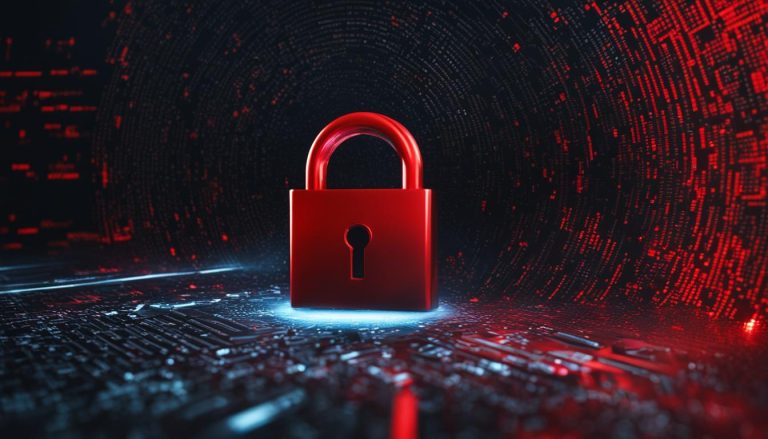A cybersecurity audit is a critical process for organizations to assess their information systems and ensure compliance with security standards. This comprehensive assessment evaluates various aspects of security, including operations, network security, data security, system security, and physical security. By performing a cybersecurity audit, organizations can identify vulnerabilities, mitigate cyber threats, and protect their reputation.
During a cybersecurity audit, digital assets and security controls are examined to ensure they meet compliance standards and effectively combat potential risks. This assessment helps organizations gain a complete picture of their IT infrastructure and determine areas that require improvement. Additionally, cybersecurity audits play a crucial role in demonstrating an organization’s commitment to security, ensuring adherence to regulations, and earning public trust.
Key Takeaways:
- A cybersecurity audit evaluates an organization’s information systems for compliance and security gaps.
- It assesses operations, network security, data security, system security, and physical security.
- A cybersecurity audit identifies vulnerabilities, ensures compliance, and mitigates cyber threats.
- Regular cybersecurity audits help organizations protect their reputation and maintain a strong security posture.
- Adopting best practices and utilizing audit frameworks improve the effectiveness of cybersecurity audits.
The Process of a Cybersecurity Audit
A cybersecurity audit is a systematic evaluation of an organization’s information systems to assess their compliance with security standards and identify any vulnerabilities or gaps that may expose the organization to cyber threats. The process of conducting a cybersecurity audit involves several steps and considerations to ensure a thorough assessment and comprehensive understanding of the organization’s security posture.
Evaluating Cybersecurity Policies and Controls
The first step in the cybersecurity audit process is to assess the organization’s cybersecurity policies and controls. This includes reviewing documented policies and procedures, evaluating access controls and user management, and examining security awareness training programs. By conducting this evaluation, auditors can determine if the organization has established robust security protocols and whether employees are adequately trained to follow them.
Analyzing Network Infrastructure and Data Security
Next, auditors focus on analyzing the organization’s network infrastructure and data security measures. This involves reviewing network architecture, examining firewall configurations, conducting vulnerability assessments, and assessing data encryption practices. By conducting this analysis, auditors can identify any weaknesses or vulnerabilities in the organization’s network infrastructure and data protection mechanisms, and recommend appropriate remediation measures.
Reviewing System Implementation and Physical Security
Another critical aspect of the cybersecurity audit process is reviewing system implementation and physical security controls. Auditors assess the organization’s system configurations, patch management processes, and incident response procedures to ensure that systems are properly implemented and regularly updated. Additionally, auditors evaluate physical security measures, such as access control systems, surveillance cameras, and data center protection, to ensure that physical assets are adequately safeguarded.
| Key Areas of Cybersecurity Audit | Activities |
|---|---|
| Operations | Evaluate security policies, access controls, and user management |
| Network Security | Review network architecture, firewall configurations, and vulnerability assessments |
| Data Security | Assess data encryption practices, data loss prevention mechanisms, and backup processes |
| System Security | Review system configurations, patch management processes, and incident response procedures |
| Physical Security | Evaluate access control systems, surveillance cameras, and data center protection |
By following a structured cybersecurity audit process and conducting a comprehensive evaluation of the organization’s operations, network security, data security, system security, and physical security, auditors can provide valuable insights and recommendations to enhance the organization’s overall security posture and resilience against cyber threats.
Importance of Cybersecurity Audits
A cybersecurity audit plays a vital role in organizations’ overall security strategy. It is a proactive measure that helps assess compliance, identify potential vulnerabilities, and mitigate cyber threats. By conducting regular cybersecurity audits, businesses can ensure the integrity of their information systems and protect themselves from evolving risks.
One of the key benefits of cybersecurity audits is their ability to detect weaknesses and security gaps within an organization’s infrastructure. By evaluating operations, network security, data security, system security, and physical security, audits provide a comprehensive view of an organization’s security posture. This valuable insight allows businesses to implement necessary measures to strengthen their defenses and protect against potential threats.
Compliance with regulatory frameworks is another crucial aspect that cybersecurity audits address. Regulations such as the General Data Protection Regulation (GDPR) and the Payment Card Industry Data Security Standard (PCI DSS) require organizations to maintain proper security controls and protect sensitive customer information. By conducting cybersecurity audits, businesses can ensure they are meeting these requirements and avoid potential legal and financial consequences.
Benefits of Cybersecurity Audits:
- Identify and address security vulnerabilities
- Ensure compliance with regulatory frameworks
- Mitigate cyber threats
- Protect the organization’s reputation
- Evaluate the effectiveness of IT infrastructure
Cybersecurity audits also help organizations protect their reputation. Proactive identification and remediation of security threats demonstrate a commitment to safeguarding sensitive information. This commitment not only instills trust among customers, partners, and stakeholders but also positions the organization as a responsible and reliable entity within its industry.
In conclusion, cybersecurity audits are essential for organizations to assess their security posture, detect and address potential risks, ensure compliance with regulatory frameworks, and mitigate cyber threats. By conducting regular audits and following best practices, organizations can maintain robust security measures, protect their valuable assets, and stay one step ahead of malicious activities in the digital landscape.
Best Practices for Cybersecurity Audits
When it comes to conducting effective cybersecurity audits, following best practices is crucial. By implementing the right strategies and frameworks, organizations can ensure comprehensive assessments of their security posture and identify potential vulnerabilities. Here are some essential best practices for cybersecurity audits:
1. Define the Audit Scope
Before conducting a cybersecurity audit, it is important to clearly define the scope of the assessment. This involves determining which areas of the organization’s information systems should be evaluated and setting specific goals and objectives for the audit. By defining the audit scope, auditors can focus their efforts on critical areas and ensure a thorough examination of security controls.
2. Increase Stakeholder Awareness
Engaging stakeholders throughout the cybersecurity audit process is vital for its success. By involving key personnel from various departments, such as IT, finance, and legal, organizations can ensure that all relevant perspectives and expertise are considered. Increased stakeholder awareness also facilitates cooperation and collaboration, leading to more effective audit outcomes.
3. Centralize Security Policies
A central repository for security policies can greatly streamline the cybersecurity audit process. By consolidating all policies and procedures in one place, auditors can easily access and review the organization’s security controls. This centralized approach helps ensure consistency and enables auditors to quickly identify any gaps or deviations from established policies.
4. Determine Relevant Compliance Frameworks
Compliance with industry regulations and standards is a critical aspect of cybersecurity audits. Organizations should identify the specific frameworks and requirements that apply to their industry and ensure their security controls align with these standards. This includes compliance with regulations such as the General Data Protection Regulation (GDPR) or industry-specific guidelines like the Payment Card Industry Data Security Standard (PCI DSS).
5. Prepare Comprehensive Questionnaires
Questionnaires are valuable tools for gathering information during a cybersecurity audit. Auditors should develop comprehensive questionnaires that cover all relevant areas, such as network security, data protection, access controls, and incident response. These questionnaires should be tailored to the organization’s specific requirements and designed to elicit detailed responses that provide a comprehensive view of the current security landscape.
6. Utilize a Cybersecurity Audit Framework
A cybersecurity audit framework provides a structured approach to conducting audits and ensures consistency in the assessment process. The Cybersecurity Program Audit Guide (CPAG) developed by the Government Accountability Office (GAO) is a widely recognized framework that offers methodologies, techniques, and audit procedures for cybersecurity audits. By utilizing established frameworks, organizations can enhance the effectiveness and efficiency of their cybersecurity audits.
7. Evaluate Personnel Cybercompetence
Assessing the cybercompetence of personnel is an essential aspect of cybersecurity audits. By conducting interviews and evaluating the knowledge and understanding of employees regarding cybersecurity policies and practices, auditors can identify areas where additional training or awareness programs may be needed. This evaluation helps organizations strengthen their human element defenses and build a culture of security awareness.
Adhering to these best practices ensures that cybersecurity audits are conducted with precision and thoroughness. By implementing these strategies and utilizing established frameworks, organizations can enhance their security posture, identify and mitigate risks, and protect their valuable assets from cyber threats.
| Best Practices for Cybersecurity Audits |
|---|
| Define the Audit Scope |
| Increase Stakeholder Awareness |
| Centralize Security Policies |
| Determine Relevant Compliance Frameworks |
| Prepare Comprehensive Questionnaires |
| Utilize a Cybersecurity Audit Framework |
| Evaluate Personnel Cybercompetence |
Conclusion
In conclusion, a cybersecurity audit plays a vital role in an organization’s overall security strategy. By evaluating compliance and identifying security gaps, an audit helps to ensure the protection of digital assets and mitigate potential cyber threats. Regular auditing enables organizations to maintain a robust security posture while also ensuring compliance with relevant regulations.
Furthermore, conducting cybersecurity audits provides several benefits, including the identification of vulnerabilities and the formulation of risk management plans. Organizations can use these insights to strengthen their existing cybersecurity strategies, thereby minimizing the potential for data breaches or other security incidents.
By following best practices, such as defining the audit scope and centralizing security policies, organizations can enhance the effectiveness of their cybersecurity audits. The adoption of integrated approaches and the use of audit frameworks, like the Cybersecurity Program Audit Guide (CPAG), can further improve cybersecurity programs and assist in managing risks effectively in an ever-evolving cyber landscape.
FAQ
What is a cybersecurity audit?
A cybersecurity audit is a comprehensive assessment of an organization’s information systems to evaluate compliance and identify security gaps.
What are the benefits of performing a cybersecurity audit?
Performing a cybersecurity audit offers several benefits, including identifying vulnerabilities, ensuring compliance with regulations, mitigating cyber threats, protecting the organization’s reputation, and providing a complete picture of IT infrastructure.
What does the cybersecurity audit process involve?
The cybersecurity audit process involves assessing the operational framework, network resources, data security measures, system implementation, and physical security controls.
What are the best practices for an effective cybersecurity audit?
Best practices for an effective cybersecurity audit include defining the audit scope, ensuring stakeholder awareness, creating a centralized security policy database, determining relevant compliance frameworks, preparing questionnaires, and providing a detailed network structure catalog.
Why are cybersecurity audits important?
Cybersecurity audits are essential for organizations to assess their security posture, detect and address potential risks, ensure compliance with regulatory frameworks, and mitigate cyber threats.
How can cybersecurity audits help protect an organization’s reputation?
Cybersecurity audits help protect the organization’s reputation by proactively identifying and fixing security threats, earning public trust, and evaluating performance within the industry.
Janina is a senior specialist in information technology


